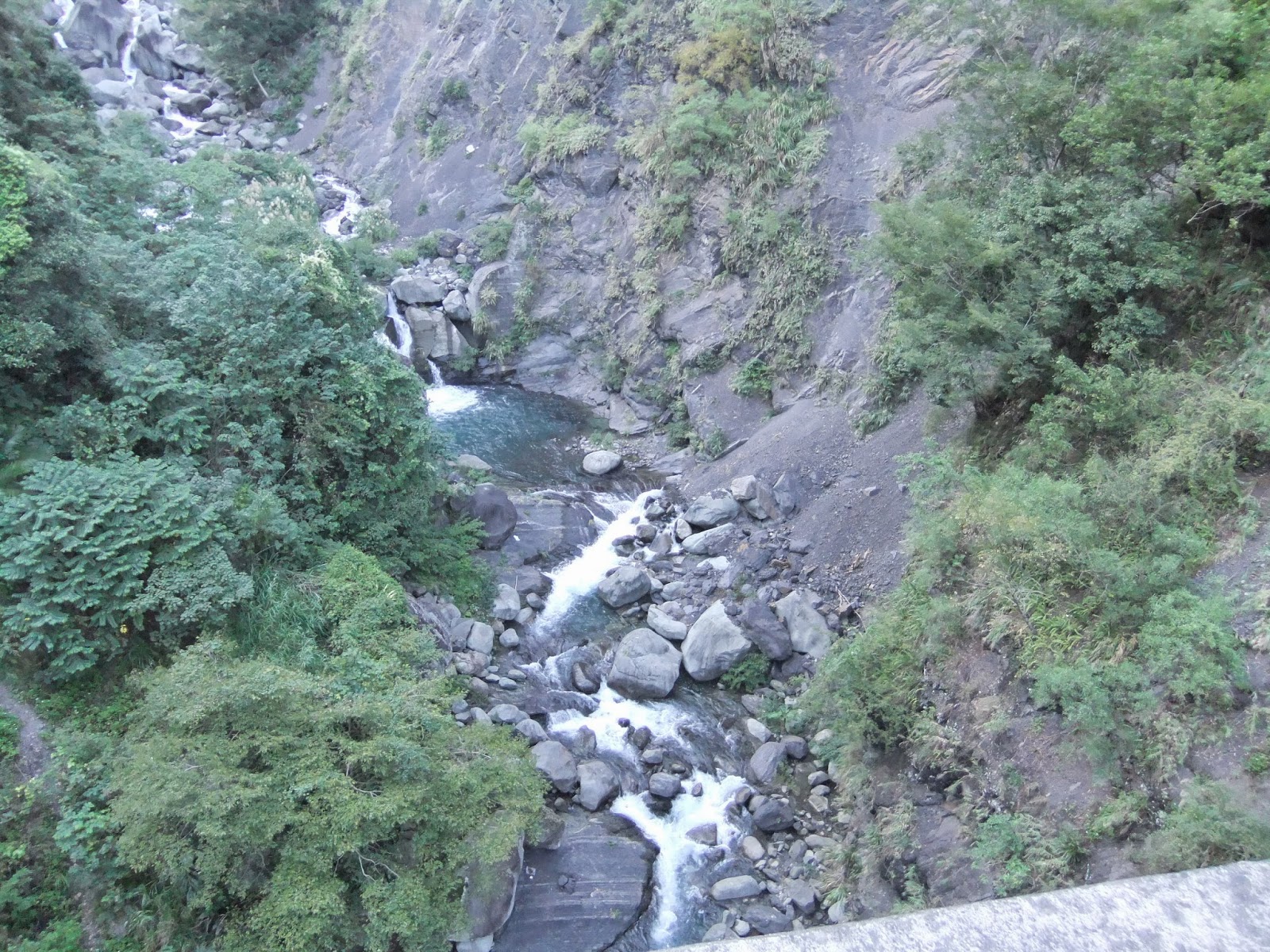7.1 The Number 7 Cross Island
Highway
 |
| A Poppy Field in Daxi |
One interesting thing I've discovered is that the meaning of certain words is different in Taiwanese English than it is in
English-English. Huh? What does that mean? Take the word
Highway, for instance. We've driven the #7 Cross-Island
Highway from Daxi Township all the way to Yilan. It starts out
as a beautiful highway.
It’s wide with double yellow lines down the middle
and moves along easily at
60 km/h (38 mph). In essence it lives up to the
name highway.
One minute we’re
zipping along in beautiful mountain scenery. We
passed a huge field of
orange poppies: Then the immaculately manicured
Chiang Kai Shek mausoleum.
Then something happened to the road. The
highway was like a road
with dual personalities…and suddenly the evil
personality showed up.
The complexion of the
road changed. It narrowed a little, then a little
more. Then it began to
snake through the forest and up the side of the
mountain; twisting and
turning; even the switchbacks had switchbacks. Until
the Cross-Island Highway
looked more like the Cross Island Goat track: And
then I’m sure I saw a goat
refusing to get on the road.
 |
| A remote temple in the mountains |
At times it felt like
I was driving the car in the cartoons where the tires
on one side of the car
stayed on the road and the others hung out over a
yawning abyss. Okay maybe
I’m exaggerating here, but not much. Then the
road got really narrow and
the sun began to set.
Then it got darker and
darker. The conversation turned darker as well. It
was like driving through a
horror movie. It got so dark that we couldn't see to
the trees on the side of
the road. And then it got really dark. I thought it would
never end.
 |
| A waterfall near the road before it went all Twilight Zone/Zombie Apocalypse on us. |
We had decided to
drive over to Yilan. People have been telling me what
a wonderful place it was,
so we thought we’d make it a day and drive the 7.
Because I hadn't been there
before, I was watching the mileage signs; just
before dark we saw a sign
that said 28 kilometers to Yilan. So we drove in the
same direction for at least
10 kilometers then we saw the next sign. Yilan 32
kilometers…wait…we were
traveling in the right direction how did it get
farther away. Then I’m sure
I saw him…In fact, I’m positive I saw Rod
Serling hitchhiking with a
sign that said “The Twilight Zone.” Then it got
really, really dark; it got
so dark that the boogieman had a night-light.
Eventually about an eon
later we came out of the mountains and into a good-sized city.
We stopped for gas and
a man gave us a road map so that we could find
an alternate route home.
One of our friends had commented to us that we
shouldn't stop for anyone
walking on the road. He said that many people had
reported seeing ghosts on
the side of the highway waving to people. I just
passed it off as a legend.
You know where I grew up we lived with the legend of
the “White Witch of
Nortonville.”
This woman was
apparently a nurse in the 1800s during an epidemic of
small pox in Northern
California. Legend has it that she overturned her wagon
while trying to reach some
sick child in a remote cabin in the hills near the
Somersville mines in
Nortonville. Now she supposedly wanders the roads
around the cemetery she’s
buried in. We would go out and visit Nortonville
looking for her but didn't really expect to find her.
Then, I saw a guy,
standing there, I couldn't help but stare he was
completely pale, like he hadn't been outside in years. He had dark circles
around his eyes and walked
with a shuffling gate, sort of dragging one leg
along. He had a
double-bitted axe in one hand and chainsaw in the other. He
was headed for the
mountains… on the road we just came down.
When he heard we’d
just come out of the mountains he looked a little
peeved. He just muttered
something that sounded like, “I knew I was late.” I
wonder
what he meant by that…










